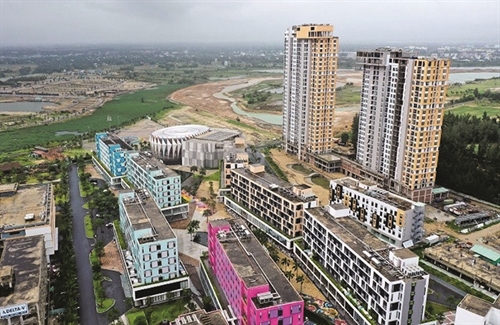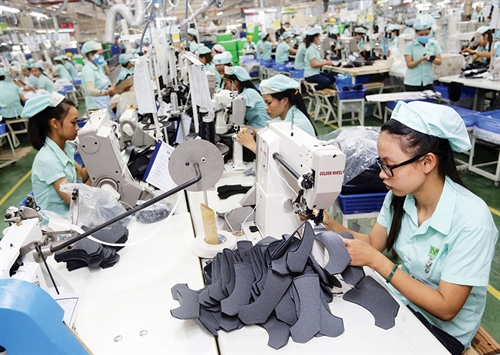Thu Huong, a 31-year-old accountant in Hanoi, is now living with her cat in shared rental apartment and although she herself is in no hurry to find Mr. Right, Huong admits that she faces growing pressure from her family to get married.
“Every time I return home, the first question my parents ask is whether I will get married this year. My family views a husband and children as the keys to life,” Huong said to correspondents of the vnexpress.net e-newspaper.
Huong is among numerous Vietnamese youngsters who are in their late 20s or early 30s and in little rush to tie the knot. However, the issue of Huong and her peers seems no longer to be just a family affair but has become a national concern.
Marry early and have kids soon for the sake of the country…
Prime Minister Nguyen Xuan Phuc on April 28 inked Decision 588/QD-TTg approving the birth rate adjustment program toward 2030 which encourages people to get married before they are 30 and have children early, preferably before 35.
The program sets the target of maintaining a replacement total fertility rate (TFR) of between 2 and 2.2 per each woman in reproductive age, bringing down the birth rate in high-fertility areas while boosting it in low-fertility areas. This aims to help the country address a falling fertility rate and cope with social problems arising from the aging population.
According to a press release on the results of the 2019 population and housing census issued by the General Statistics Office of Vietnam in December last year, the country’s birth rate has dropped from four children per women in 1986 to 2.09 today, just under the ideal replacement rate of 2.1 that is needed to maintain a steady population without resorting to immigration. Noteworthily, the average birth rate differs greatly across the country, ranging between 1.83 in rural areas and 2.26 in urban areas. Ho Chi Minh City, the biggest city and economic hub of the country, has the lowest fertility rate of 1.39 per woman in reproductive age while the central province of Nghe An scores the highest rate of 2.83. Education, in particular, is another influencing factor. Women with a university degree have an average of 1.85 children each compared with 2.59 for those who have no formal schooling.
 |
| A playground for children in Hung Yen provincePhoto: Dinh Tuan/VNA |
Vietnam’s population hit 96.2 million last year, which is third in Southeast Asia and 15th globally. However, the country reached a turning point in 2015 when it started to become one of the countries with the fastest aging populations in the world, the Ministry of Labor, Invalids and Social Affairs said in a 2016 report.
Low fertility rates would result in a quickly aging population, straining social welfare systems, including pensions, health insurance and social security, experts have warned.
The South China Morning Post has recently published an article analyzing the Vietnamese Government’s move to encourage young people to marry before 30. Trinh Nguyen, a senior economist for Asia at Natixis, a French corporate and investment bank, was cited in the article as saying that Vietnam was seeing slower growth in the population of working-age adults and the country’s ability to lever cheap labor to compete in global trade and fast growing domestic demand was reaching a limit.
“As a result, you can see the Vietnamese Government trying to look ahead by 30 years and prepare for a silvering Vietnam as it worries that Vietnam will become older while still poor,” Trinh commented.
“Stable population growth could facilitate the attraction of foreign direct investment for sustained economic growth,” Naomi Kitahara, United Nations Population Fund representative in Vietnam, was quoted by the South China Morning Post as saying.
Realities show that not a few nations have managed to reduce the birth rate. However, on the contrary, there is no successful model of boosting the fertility rate once it has dropped too low. The Republic of Korea, Japan, Thailand, China, European countries, etc., have spent a lot of money to fight falling birth rates but achieved just humble results. Hence, it is the right time for Vietnam to adjust its population policy to promote young people to get married and have children early.
…And for your own good
“Biologically, giving birth before 30 is good for both the mother and the child,” Dang Quynh Thu, director of the Population Size Department under the Ministry of Health’s General Office for Population and Family Planning, said in an interview with the local newswire vnexpress.net.
Although health benefits of getting married and having children early are undeniable, young people remain hesitant to tie the knot.
“Marriage cannot be forced or rushed,” Thu Huong said.
“My mother said marriage was one of the first steps to adulthood. To me, it should be the last one since I don’t want to step into anything when I’m not ready.” Trinh Dang Quyen, a 34-year-old English teacher in Ho Chi Minh City, shared his viewpoints with the vnexpress.net.
Economic issues are also reasons behind youngsters’ decision to get married late.
Mai Kieu Oanh, a 28-year-old office clerk in Ho Chi Minh City, is having no plan to get married though her boyfriend has popped the question several years ago.
“At present, I’m still financially incapable of caring for my own family,” she gushed.
In this situation, provision of financial support seems a good idea.
“If people are in love and want to tie the knot, supporting them financially is a good move, especially when they have children as raising a child is pricey,” Quyen said.
Under Decision 588, several incentive policies for couples having two children will be applied on a pilot basis in localities with a low birth rate. For example, these couples will be entitled to income tax reduction and support for payment of tuition fees for their children and for rent or purchase of social houses, while their children will be given with priority in admission to public schools. Particularly, women will be provided with such maternity services as infertility testing, and prenatal and postnatal screening. Those who have two children will also be assisted when they return to work after maternity leave.
In addition, to ease the mind of parents, local administrations will develop and expand family-friendly services like babysitting, breast milk banking and family healthcare, paying special attention to the building of nursery facilities and kindergartens, especially in urban and industrial areas.
Local administrations are also asked to pilot marriage and family counseling services such as dating clubs and pre-marriage health consultations.- (VLLF)









